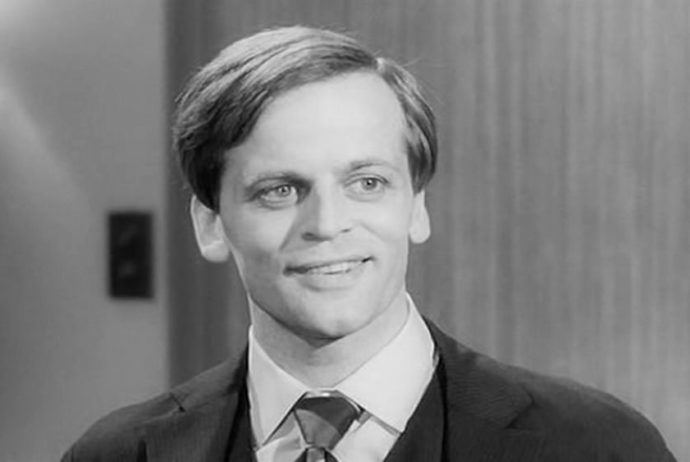Dir: Mario Costa
Star: Klaus Kinski, Gabriella Giorgelli, Giuseppe Cardillo, Paolo Casella
a.k.a La Belva and Rough Justice
It’s nice to see Kinski allowed to let rip fully on a character now and again. Werner Herzog was particularly good at allowing this, and the results were usually incandescent. This isn’t quite at those levels, but is still one of the more memorable spaghetti Westerns in which Klaus appeared. He plays Johnny Laster, a sex-maniac who will paw any woman within range, especially when he has had a bit to drink. This is apparent, right from the start, where he tries to assault a particularly… bosomy young woman, washing her clothes in a river. Only the fortunate presence of someone with a larger gun than Johnny’s, saves her from a fate worse than death.
In town, he teams up with a local ne’er-do-well, and they hatch a plan to rob popular local businessman, Mr. Powers. The plan leaves Powers dead, but the thieves come up empty. Laster, after disposing of his accomplice, gets involved with another area hoodlum, Glen (Casella), who clearly wasn’t aware of what happened to the last accomplice. He has come up with a rather more convoluted plan to get their hands on Powers’ money:
 Abduct Powers’ daughter, Nancy, who is on the way to town to claim her inheritance, and get someone to take her place
Abduct Powers’ daughter, Nancy, who is on the way to town to claim her inheritance, and get someone to take her place- ?????
- PROFIT
Okay, it’s slightly better thought-out than that, though not by much. His idea isn’t bad: it’s more the execution, because the stand-in could not look less like Nancy Powers if she tried. This is what happens when your chosen replacement for the thoroughly blonde daughter of old money is Juanita (Giorgelli), a Mexican go-go dancer – or, at least, the 19th-century version thereof. Remarkably, it seems to work, at least to begin with. For no-one in the town has met the daughter, and Powers’s minion, Pinkerton, who has at least seen a portrait of her, initially writes off the difference between Nancy and Juanita as bad art.
Even more ill-conceived is the other part of the plan, which involves leaving Laster to “guard” Nancy. [Glen really needs to do a better background check on the partners in his criminal endeavors…] It doesn’t take long before he’s moving in on her, like a shark that scents blood. Things escalate from there, and although the conspirators get a chunk of cash, both Nancy and Pinkerton end up dead. Except Pinkerton isn’t quite dead, and identifies everyone to the authorities. The gang splits up, with a price on their heads, and local Mexican gang leader Machete (any Robert Rodriguez fans will understand why I hooted on hearing that name) sees an opportunity to claim the reward. His men track down Laster who, like the craven coward he is, agrees to finger the rest of the gang and the loot, if his life is spared.
I’m pleased to report this doesn’t end well for him. I’m slightly less pleased that it doesn’t end too well for anyone else either – in particular Juanita and her lover Ricardo (Cardillo). They were fairly sympathetic characters, who just wanted a bit of cash, so they could escape their life of drudgery, and didn’t quite realize what they were getting into, by aligning themselves with Laster. Once again, folks: we see the importance of doing thorough background checks. It does feel as though Costa ran out of ideas as to where the plot should go for the final reel, eventually throwing up his hands and ordering a bulk package from “Gunfights In Rock Quarries R Us”.
To that point, however, this has generally been reasonably watchable, with a brisk pace and plot that twists in interesting ways. The sheer “loose cannon-ness” of Laster is fascinating to see, since you’re never quite sure what he’s going to do next. Though if you bet on something sleazy, you’ll likely come out of the movie ahead with your bookie. It’s notable to see Kinski play a character who is basically close to irredeemable, and lives up to the nickname “Crazy Johnny.” The sex-maniac angle is particularly notable and one wonders how much Kinski’s torrid personal life played into it. Was the character of Laster written specifically for him? Regardless, it seems so close to home I’m surprised Klaus took it on. It’s almost like O.J. Simpson playing the part of a wife murderer.
I would like to have seen him more in the middle section of the film: he’s somewhat shunted off to one side for the cutesy stuff between Juanita and Ricardo, and the “unconvincing stand-in” section of the plot. Similarly, the sudden arrival of and focus on Machete in the second half, after he has only been mentioned briefly to that point, is slightly jarring. The rest of the cas5 are so bland as to be almost forgettable, with none of them making any real impact, and the same goes for Costa’s direction: his skills seem more skewed towards the script-writing. This was the final movie on which Costa would work, and appears to have seen him come out of retirement, as the rest of his 33 directorial credits were all between 1945 and 1965.
There is one name of note who worked on the film beyond Kinski. The soundtrack is an early one by Stelvio Cipriani, whose IMDb entry lists over 200 movie credits as composer, including a remarkable eighteen in a single year (1978: I can only presume some were partial credit, unless he was truly capable of churning out a full score every 20 days!). These are mostly Italian, but some of his music has been used elsewhere, e.g. in the Death Proof section of the Grindhouse double-feature, so it appears Quentin Tarantino is a fan. All told, it’s a solid enough entry, but one where Kinski’s performance is probably the only factor which will stick in your brain. Even with the very strange dubbing in the English-language version, which has Klaus given a bizarre Southern drawl because… reasons, his animal-like intensity still shines through. It’s worth a look, purely for that alone.
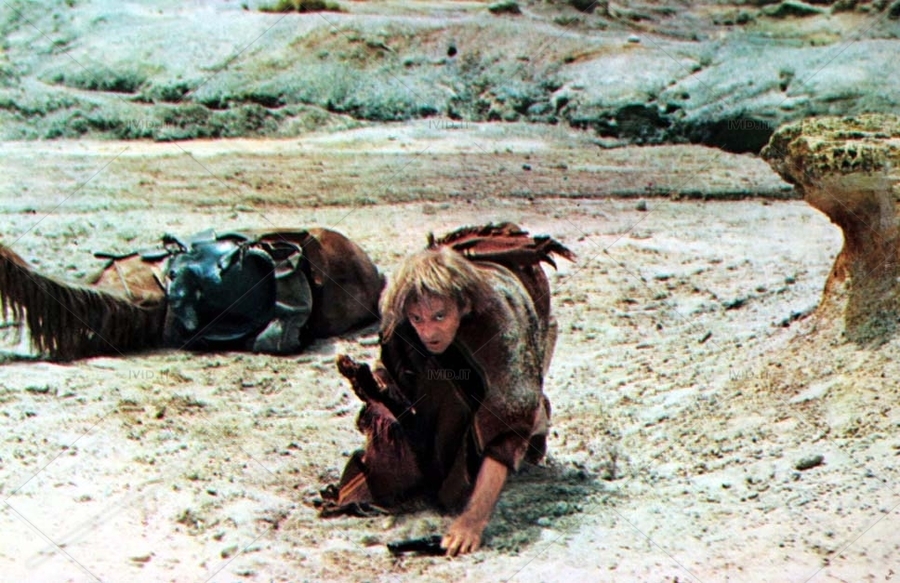
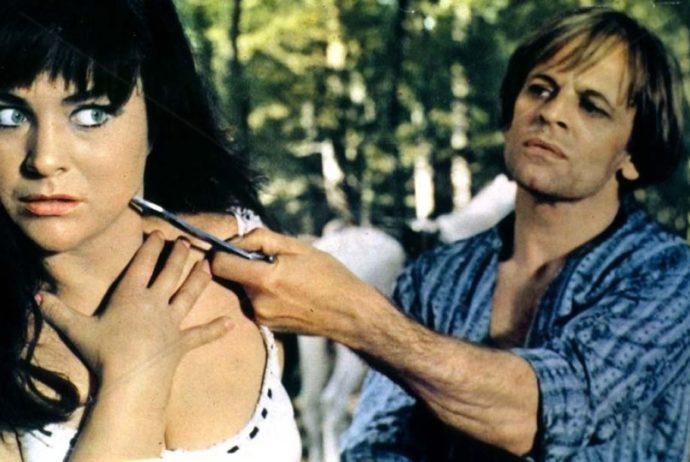
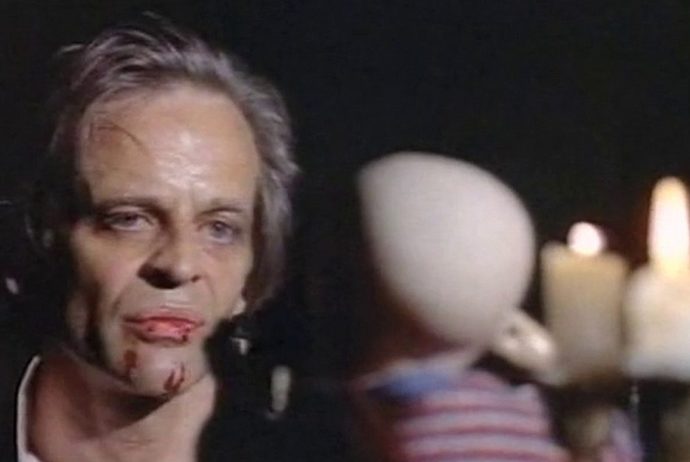
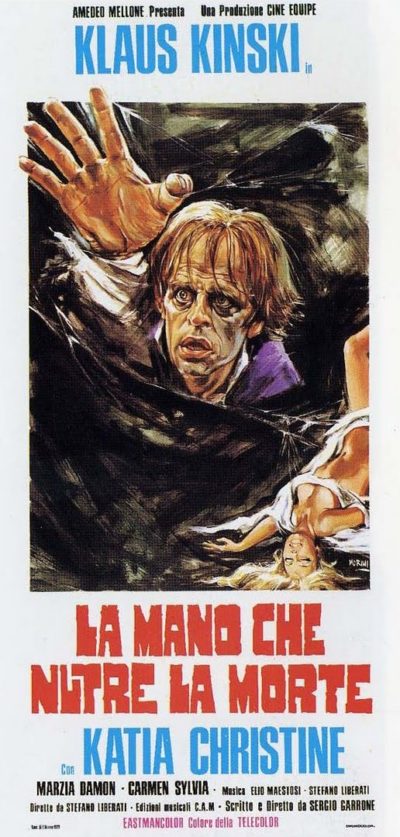 That both Masha and Tanja are played by the same actress, more or less tells you where the rest of the film is going to go. We’d worked out how it was going to end quite some time in advance, and the movie did not disappoint in this aspect, shall we say. There were some unexpected diversions along the way, however, not least the lesbian canoodling between Katia and Sonia – even if the post-canoodle cuddle is rudely interrupted by the minion. We were also impressed with the use of a tuning fork to manipulate said henchmen, suggesting that the Professor’s research has perhaps also gone into the area of mind-control.
That both Masha and Tanja are played by the same actress, more or less tells you where the rest of the film is going to go. We’d worked out how it was going to end quite some time in advance, and the movie did not disappoint in this aspect, shall we say. There were some unexpected diversions along the way, however, not least the lesbian canoodling between Katia and Sonia – even if the post-canoodle cuddle is rudely interrupted by the minion. We were also impressed with the use of a tuning fork to manipulate said henchmen, suggesting that the Professor’s research has perhaps also gone into the area of mind-control.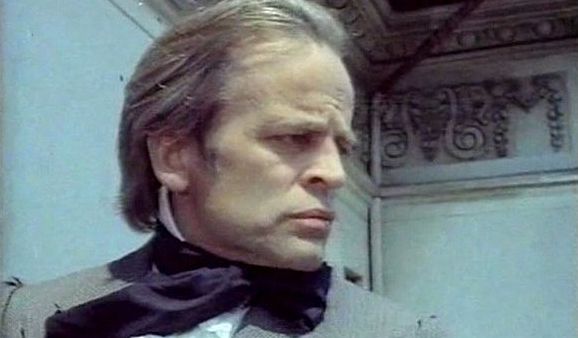

 Michel abducts the young girl, and uses her as leverage – though quite what his endgame is with this kidnapping, remains rather opaque. It may be an attempt to rekindle the flame with Veronique, though child kidnapping seems a bit of a poorly conceived option. Indeed, the same could be said for quite a few other elements, such as the “Nuit d’Or” casino which gives the film its title, and where it both opens and closes. While there are suggestions that Michel was a heavy gambler, it’s never clear how this quite fits into the overall scenario.
Michel abducts the young girl, and uses her as leverage – though quite what his endgame is with this kidnapping, remains rather opaque. It may be an attempt to rekindle the flame with Veronique, though child kidnapping seems a bit of a poorly conceived option. Indeed, the same could be said for quite a few other elements, such as the “Nuit d’Or” casino which gives the film its title, and where it both opens and closes. While there are suggestions that Michel was a heavy gambler, it’s never clear how this quite fits into the overall scenario.

 The focus is, instead, on Macho Callaghan (Cameron) – note the “g”, for legal reasons! – who is the sole survivor of the Carson gang, after they are attacked and massacred by Butch Cassidy (Betts) and his gang. After recovering, Callaghan teams up with another renegade, Buck O’Sullivan, to take revenge on the people responsible – a process complicated by Cassidy’s group having split in two, with Buck among the men now following Ironhead Donovan (Mitchell). Those two parties hold no love for each other either, having split after a rigged game of poker. The vast bulk of the running time sees Callaghan and O’Sullivan working to infiltrate Ironhead’s gang, and/or attack Cassidy’s. It’s all incredibly dull, even by the low standards of Fidani, whose reputation as among the worst of spaghetti Western directors is certainly not diminished by this.
The focus is, instead, on Macho Callaghan (Cameron) – note the “g”, for legal reasons! – who is the sole survivor of the Carson gang, after they are attacked and massacred by Butch Cassidy (Betts) and his gang. After recovering, Callaghan teams up with another renegade, Buck O’Sullivan, to take revenge on the people responsible – a process complicated by Cassidy’s group having split in two, with Buck among the men now following Ironhead Donovan (Mitchell). Those two parties hold no love for each other either, having split after a rigged game of poker. The vast bulk of the running time sees Callaghan and O’Sullivan working to infiltrate Ironhead’s gang, and/or attack Cassidy’s. It’s all incredibly dull, even by the low standards of Fidani, whose reputation as among the worst of spaghetti Western directors is certainly not diminished by this.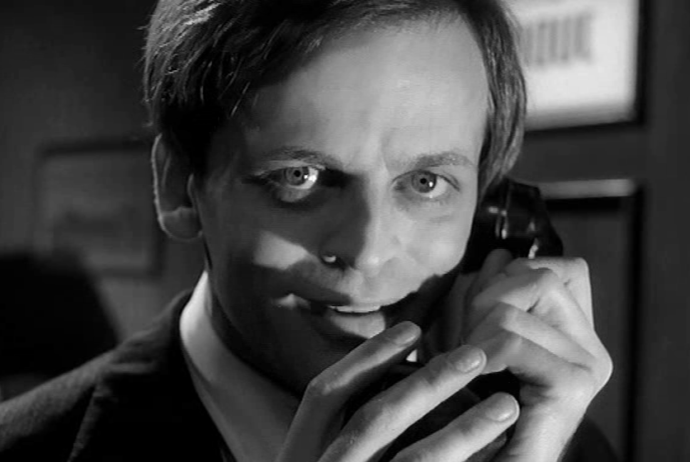
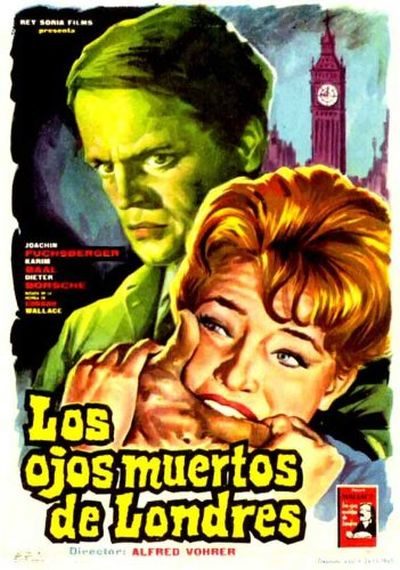 The hero is Scotland Yard’s Inspector Larry Holt (Fuchsberger), who is investigating a series of deaths by drowning in the Thames, which he’s convinced are murders, even though the forensic evidence suggest accidental demises. We know from the start that he’s onto something, having watched as Blind Jack, a hulking bald brute with cloudy eyes, attacks his chosen victim, an Australian wool merchant. A Braille note found in the victim’s pocket brings in specialist Nora Ward (Baal), who helps uncover a possible link to “The Dead Eyes of London,” an organized criminal group of blind beggars, and a mission for sightless old men run by the Reverend Paul Dearborn.
The hero is Scotland Yard’s Inspector Larry Holt (Fuchsberger), who is investigating a series of deaths by drowning in the Thames, which he’s convinced are murders, even though the forensic evidence suggest accidental demises. We know from the start that he’s onto something, having watched as Blind Jack, a hulking bald brute with cloudy eyes, attacks his chosen victim, an Australian wool merchant. A Braille note found in the victim’s pocket brings in specialist Nora Ward (Baal), who helps uncover a possible link to “The Dead Eyes of London,” an organized criminal group of blind beggars, and a mission for sightless old men run by the Reverend Paul Dearborn.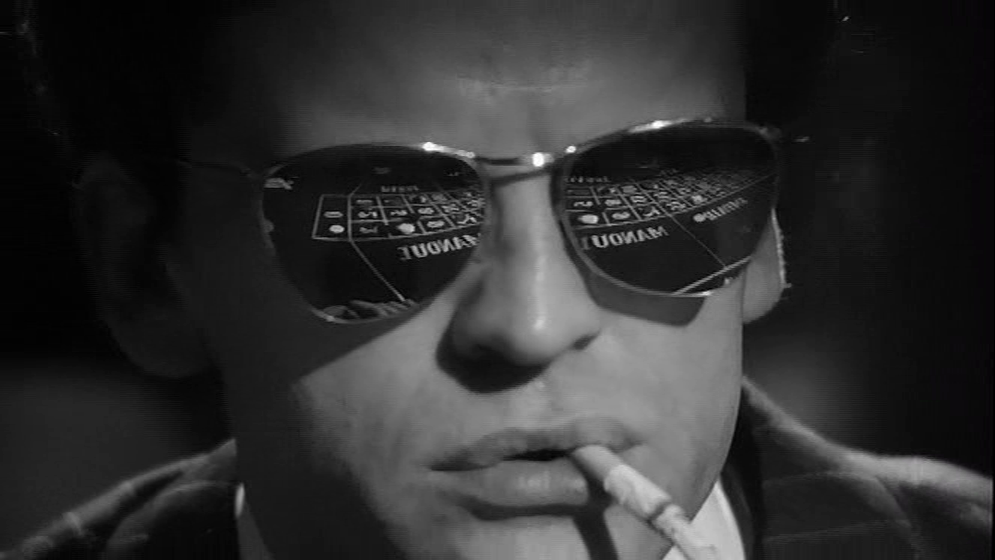
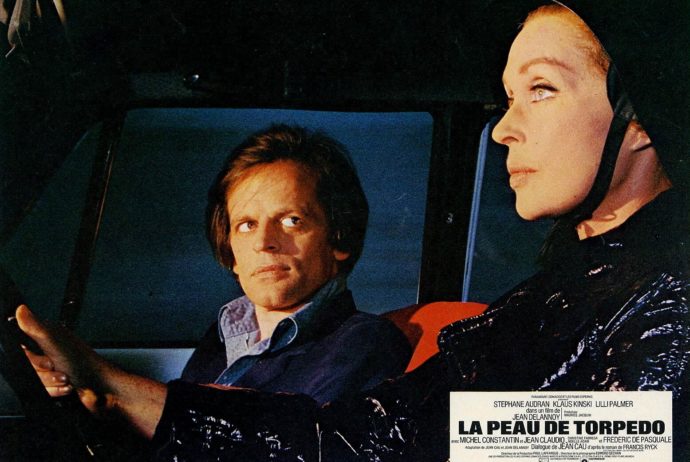
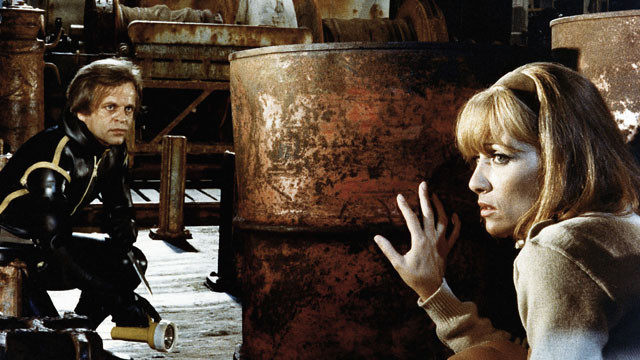 As a contrast, it came out between On Her Majesty’s Secret Service and Diamonds are Forever, much more the kind of spy films produced during this era. This is closer to Le Carre than Fleming (even if I acknowledge the gap between the 007 novels and their adaptations!), being as interested in the mechanics of the spy business as its characters. The focus for the latter shifts repeatedly, from Nicolas to Dominique to Coster (Michel Constantin), the French counter-espionage agent leading the investigation, to Helen). Two scenes in particular stand out. There’s a long, almost silent depiction of Nicolas’s break-in to his target and, later, another lengthy sequence where another of Helen’s minions, knowing he’s being followed, tries to shake the tail. This switches between him and the French authorities, who know he knows and use all their resources to keep on their target.
As a contrast, it came out between On Her Majesty’s Secret Service and Diamonds are Forever, much more the kind of spy films produced during this era. This is closer to Le Carre than Fleming (even if I acknowledge the gap between the 007 novels and their adaptations!), being as interested in the mechanics of the spy business as its characters. The focus for the latter shifts repeatedly, from Nicolas to Dominique to Coster (Michel Constantin), the French counter-espionage agent leading the investigation, to Helen). Two scenes in particular stand out. There’s a long, almost silent depiction of Nicolas’s break-in to his target and, later, another lengthy sequence where another of Helen’s minions, knowing he’s being followed, tries to shake the tail. This switches between him and the French authorities, who know he knows and use all their resources to keep on their target.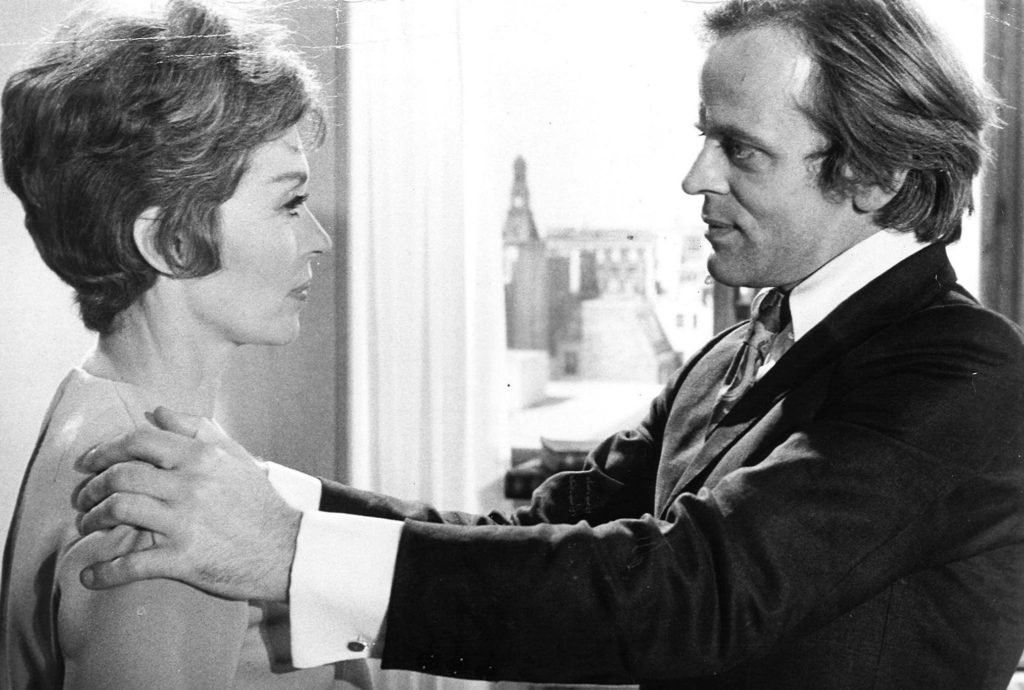

 The interplay between these factions and individuals is always intriguing. Hogan in particular is a wild-card, liable to explode into sudden brutality at the drop of a card. Yet that appears to make him something of a chick-magnet. One of the hostages basically flings herself at him, resulting in this immortal exchange between her and Hogan:
The interplay between these factions and individuals is always intriguing. Hogan in particular is a wild-card, liable to explode into sudden brutality at the drop of a card. Yet that appears to make him something of a chick-magnet. One of the hostages basically flings herself at him, resulting in this immortal exchange between her and Hogan: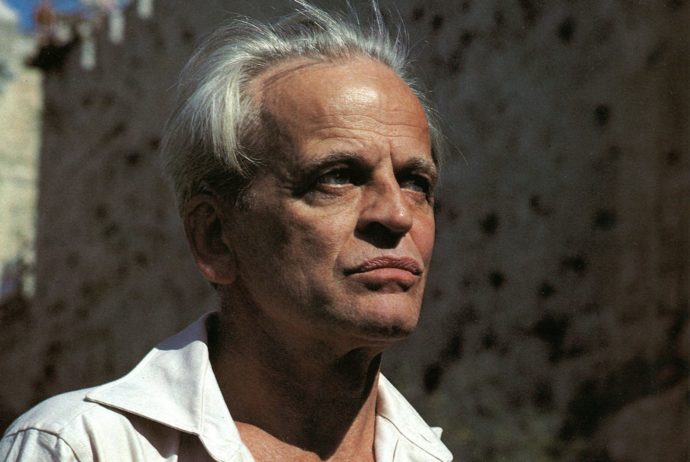
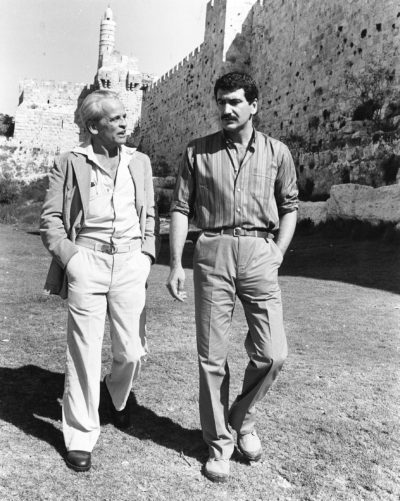 I did find it admirably even-handed. There have been plenty of other films which covered the undercover war between Mossad and their terrorist adversaries in the wake of the Munich massacre, but these have generally leaned more heavily toward the Israeli viewpoint. This is more neutral, and certainly considerably more cynical in its approach. Both sides have no qualms at all about using and deceiving people to achieve their ends, and it’s fortunate the script follows the novel to its downbeat conclusion. where Charlie is basically broken by the mission, and the realization she has been utterly played as a patsy by Kurtz and his crew.
I did find it admirably even-handed. There have been plenty of other films which covered the undercover war between Mossad and their terrorist adversaries in the wake of the Munich massacre, but these have generally leaned more heavily toward the Israeli viewpoint. This is more neutral, and certainly considerably more cynical in its approach. Both sides have no qualms at all about using and deceiving people to achieve their ends, and it’s fortunate the script follows the novel to its downbeat conclusion. where Charlie is basically broken by the mission, and the realization she has been utterly played as a patsy by Kurtz and his crew.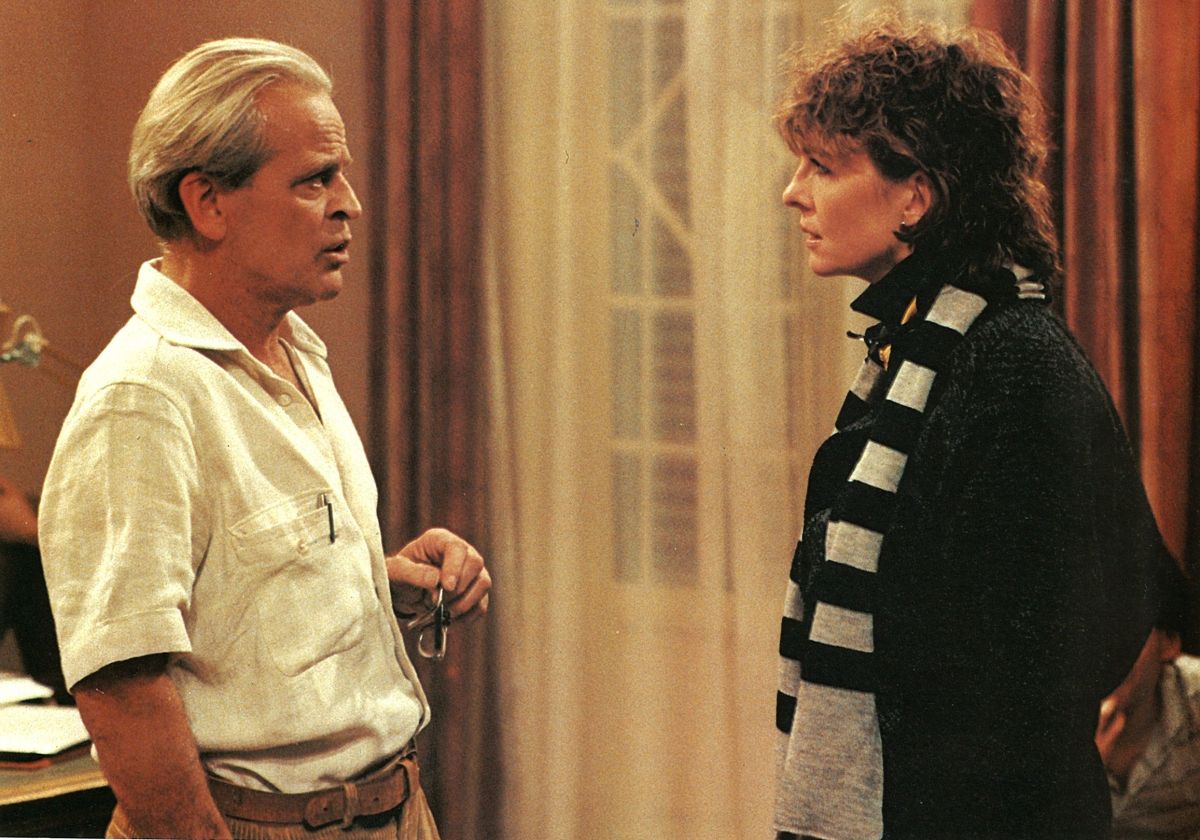

 He goes back into the forest and meets another legend, the malicious giant Dutch Michael (above). He convinces Peter that the heart is the cause of all woes, and allowing Dutch Michael to add Peter’s to his collection – which includes Ezekiel’s – will put him back on the road to business success. Yes, the brick-like moral here is that the rich are
He goes back into the forest and meets another legend, the malicious giant Dutch Michael (above). He convinces Peter that the heart is the cause of all woes, and allowing Dutch Michael to add Peter’s to his collection – which includes Ezekiel’s – will put him back on the road to business success. Yes, the brick-like moral here is that the rich are 